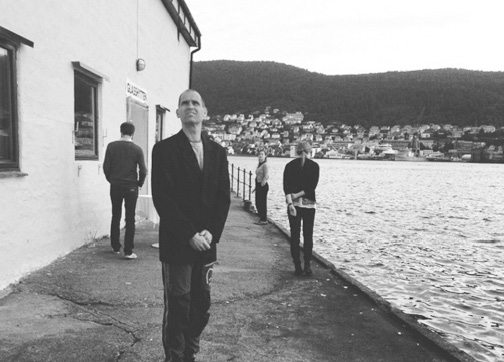
“3-PART DANCES” TO “STAY”
first performed on June 27, 2015
United Sardine Factory (“USF”), Bergen, Norway
performed once in 2015
BILL DIETZ / MELODY NIXON
Brooklyn, NY / Berlin, Germany
550233666m550233666e550233666l550233666o550233666d550233666y550233666n550233666i550233666x550233666o550233666n550233666@550233666g550233666m550233666a550233666i550233666l550233666.550233666c550233666o550233666m
tutorialdiversions.org
“3-PART DANCES” TO “STAY”
BILL DIETZ / MELODY NIXON
I want you to stay. I expect you to go, so I want you to go. The sounds of the bush are soothing. The sounds of my voice make you leave. Step. Stop.
As performer I interpret Bill Dietz’s composition “3-Part Dances,” taking the score from his “Tutorial Diversions” series (Edition Solitude, 2015) as a launching point for an investigation into the psychology of vulnerability. Dietz’s score instructs the performer to select a text—musical, or otherwise—and run this through a program accessible from his website to digitally alter its sound levels. The “3-Parts Dances” software turns the selected ten-minute text into a gradually crescendoing soundtrack; against this, the performer of Dietz’s Diversion is instructed to move back from the sound source at the threshold of audibility. As the sound of the text grows louder, the performer (and her attendant audience) retreats to where sound can barely be perceived.
I chose a voice recording of my personal essay “Stay” as the source text for “3-Part Dances.” This lyrical short prose piece depicts deaths related to the postcolonial search for identity in New Zealand, and, in particular, my mother’s disappearance.
I invited the public of Bergen, Norway, to join in a participatory performance of “‘3-Part Dances’ for ‘Stay’” at the Artist-in-Residence studios of USF Verftet—a renovated sardine factory on the harbor in Bergen, Norway. Participants were instructed to wear comfortable footwear and to leave the AiR studio in any direction they wished as the sound of the source text—played through a simple stereo system—increased.
This was a work of performance art that had at its core the formal logic of a music composition. By matching an original text that deals with emotional and physical abandonment with a score that instructs the performers to distance themselves from the source text, I address both the psychology of abandonment and the problematic of whether non-musical content can be aligned with form in musical composition.
Outside, a thousand seabirds could be circling above the old sardine factory. They could caw in rhythm with my voice. Who isn’t hungry for sardines? But they don’t, and you all leave the building, step-by-step. Honestly, I am relieved. You’re moving away from me. That you can sidestep my suffering is a relief. You’re listening, poised on the threshold of audibility. As my story becomes more real, you leave. Though some of you do look back.